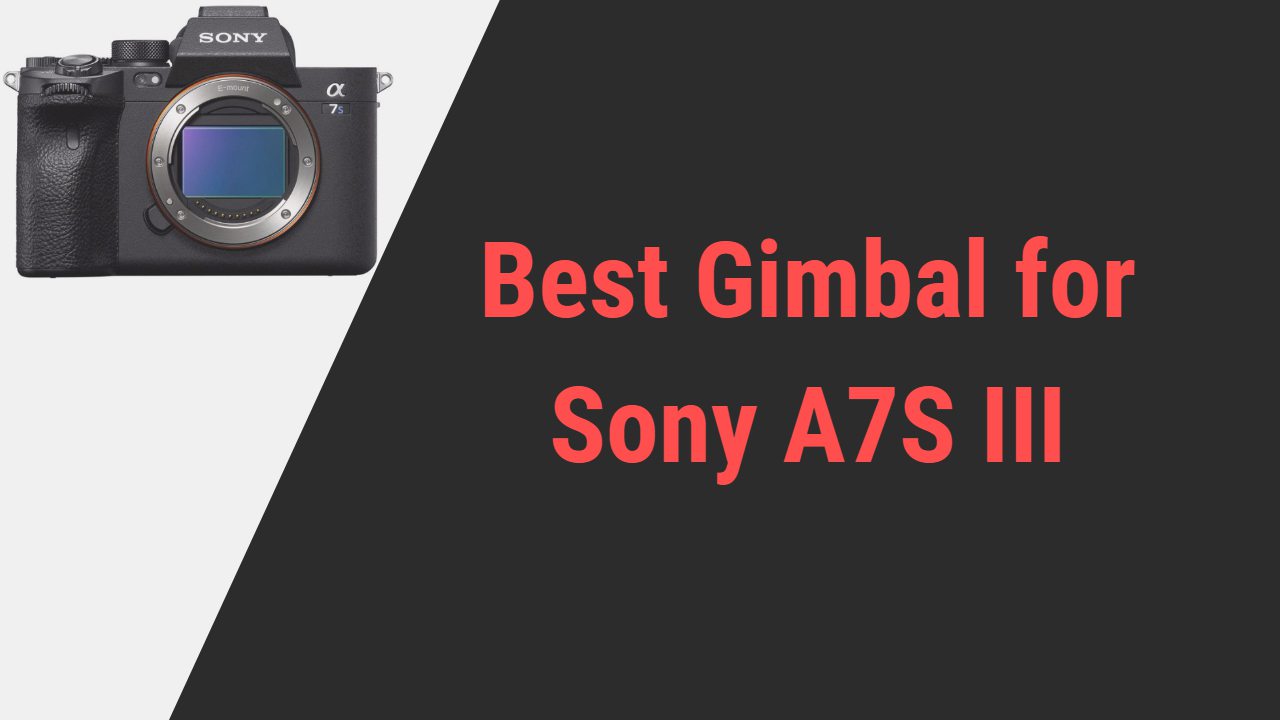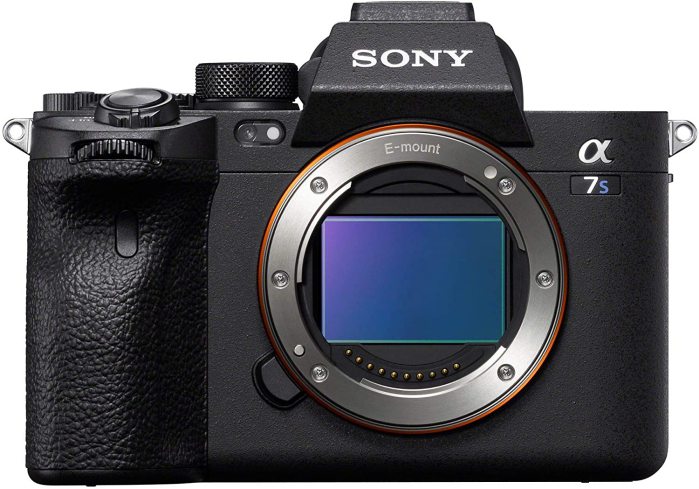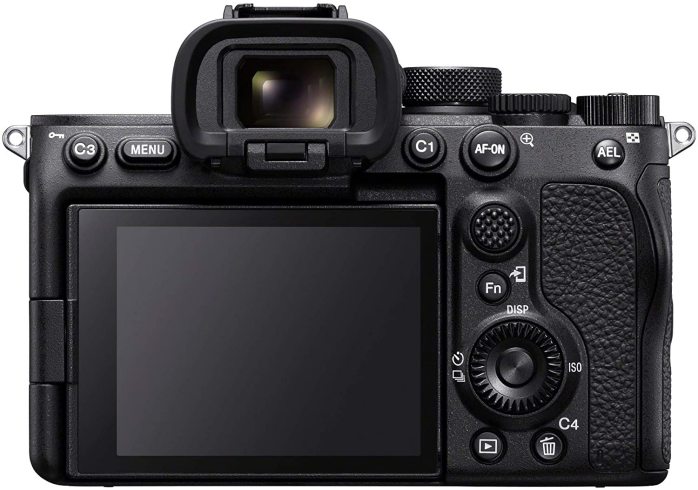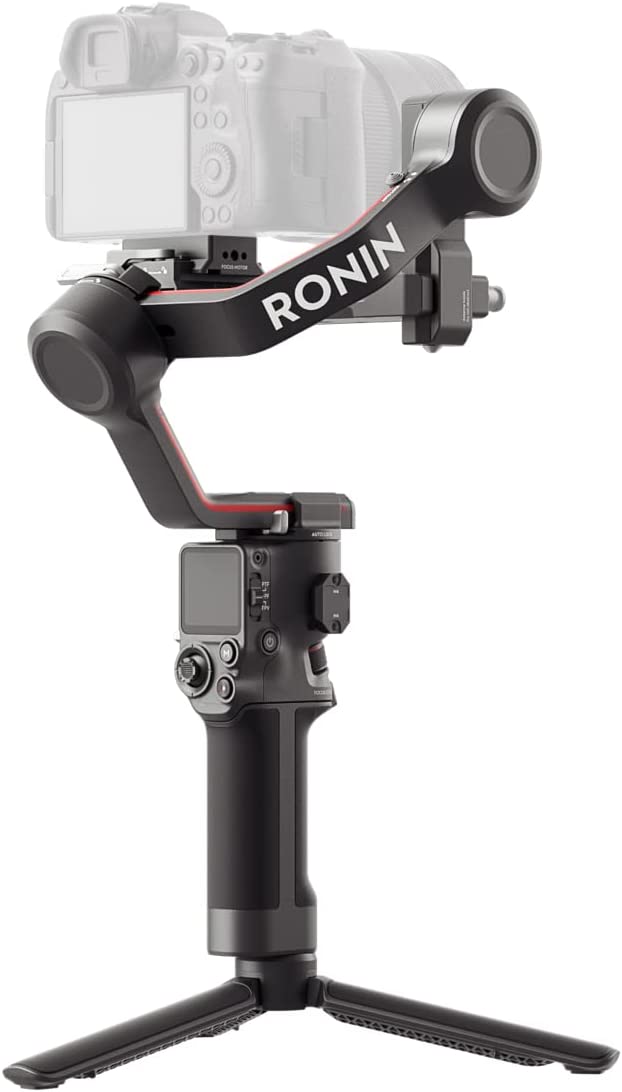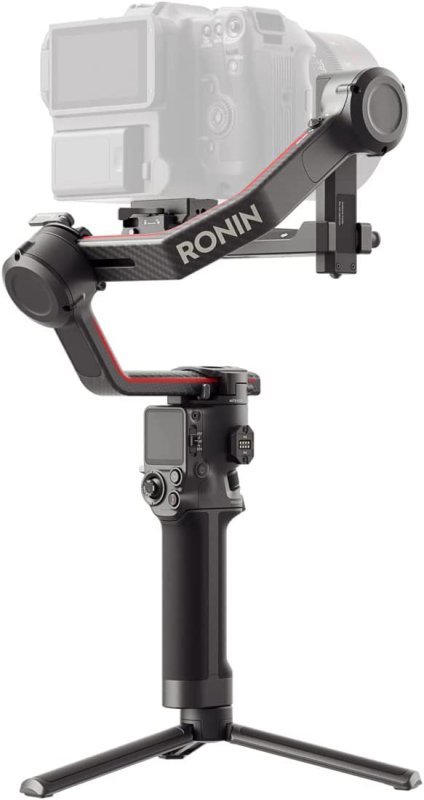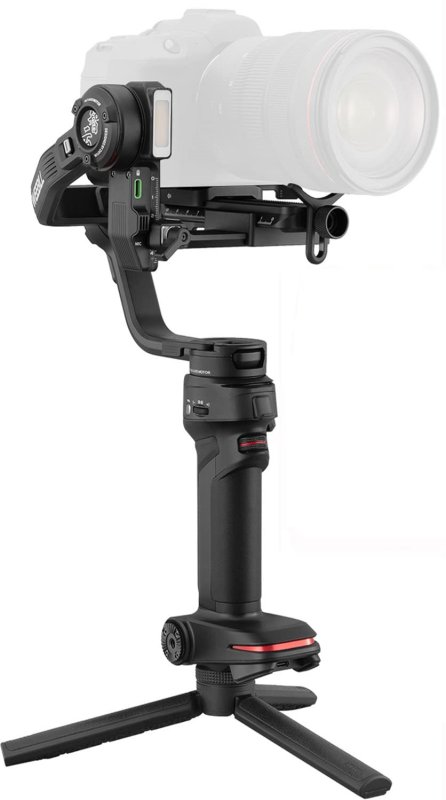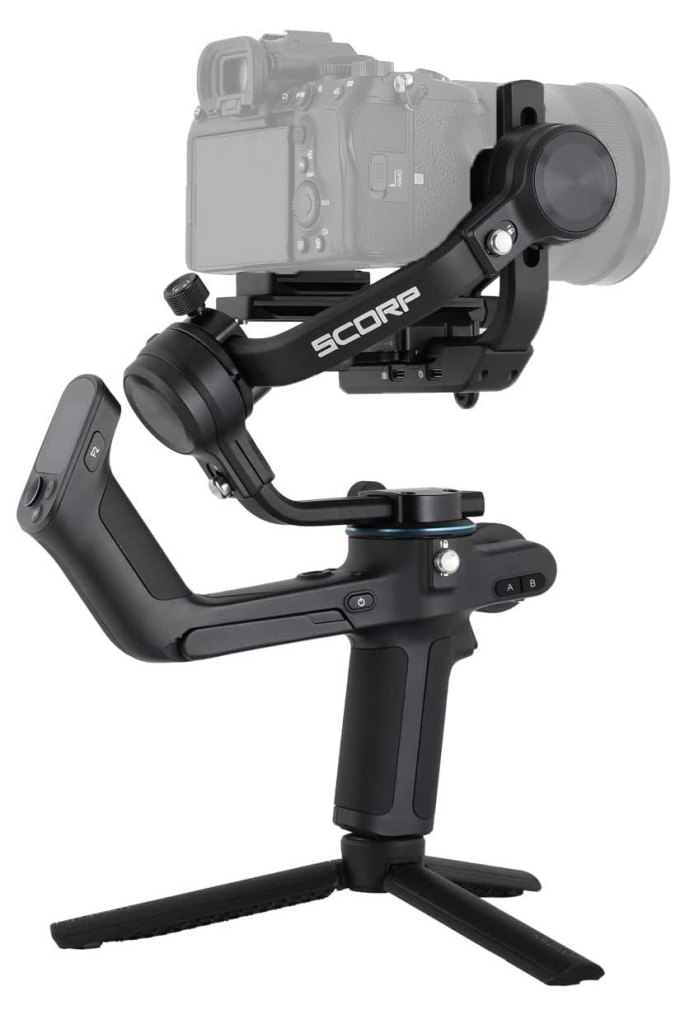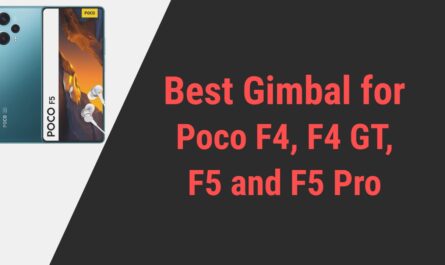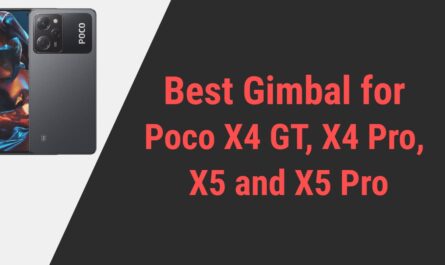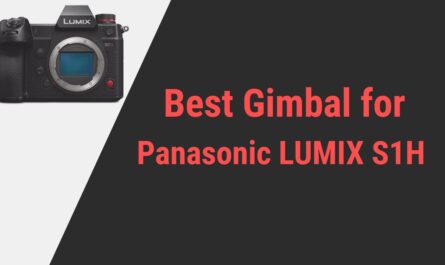What photography actually is without adequate accessories, like a good camera is not enough to catch blurry-free professional shots without its supporting system. I definitely am a Sony camera user; The iconic brand that has granted so much intellectual advancement through its wealthy appliances series.
So today, I am gonna discuss a lot more about one of the best and my personal favorite edition: The one and only Sony A7S III, a professional-level photography tool with jaw-droppingly videography and photography abilities.
But first, let’s talk about my experience with Gimbal usage of the same. Most of you don’t know a little too well about the gimbal itself. So gimbals are the high-performer innovative tool that gives hands in stabilizing the footage by mounting the camera on; this is usually done by balancing the dynamic footage through the potent motor mechanism.
The market is flooded with the effective lane of top-notch gimbals, but among them, which one is suited best for Sony A7S III is the question I am going to answer today.
So grab a seat and dive right in if you are planning to buy the Sony A7S III camera or even have it and looking for the best opportunity to enhance your photography skill; because I am going to share my personal experience with these top four gimbals; one that can suit your necessity of stabilizer.
Sony A7S III
Note:
All the gimbals mentioned here are tested with Sony A7S III and work perfectly fine.
| DJI RS 3 (Best of The Best)

|
| DJI RS 3 Pro (Most High-end - Highest Payload & Comes with Advanced Features)
     |
| Zhiyun Weebill 3 (Budget Option)
     |
| FeiyuTech SCORP
     |
Best Gimbal for Sony A7S III
1. DJI RS 3 – Best Gimbal for Sony A7S III
No one has been left unfamiliar with the creative power DJI brand holds; I do come in it. Since this DJI RS 3 is an updated and innovative gimbal, I have made the decision to add this exception to the top of the list.
I found this ultra-potent DJI RS3 gimbal to be super compatible with the Sony A7S III camera; its superior features and design click with the camera. Let’s see how
First, DJI RS 3 Gimbal, an updated version, comes with lighter and sleeker updates, making things extremely comfortable for me. Even with the Sony A7S III 614-gram weight, I can easily move around and carry the camera for most prolonged operations, all due to the gimbal’s lightest 2.8-pound weight.
Though the whole light-weighted feature doesn’t fool gimbal strength and physics, not the high payload capacity, ideally of 6.6 pounds. This tiny-looking gimbal has miraculous composition, one that can take the Sony A7S III body and stabilize it pretty well.
The updates have made the gimbal super fastest and most convenient; I adore the quick-release mechanism of the gimbal. This allows the easy attaching and detaching of the A7S III or swapping the battery.
Another fascinating thing about this gimbal is the whole easy mounting and auto-axis lock. When the gimbal is mounted, all I need to do is easily press and hold the power button while the gimbal is off; once I do so, the gimbal expands automatically, and my whole work goes smoothly. Did the same and pressed the power button, and the axes automatically locked and secured my A7S III firmly.
Apart from the secure gripping, I also like the gimbal’s wireless shutter control; this gives me the freedom to shoot by using a functioning key on the stabilizer.
The same goes for the integrated control; this is super easy; all I have to do is fine-tune the knob, and the A7S III can give balanced videos by sliding forward and backward.
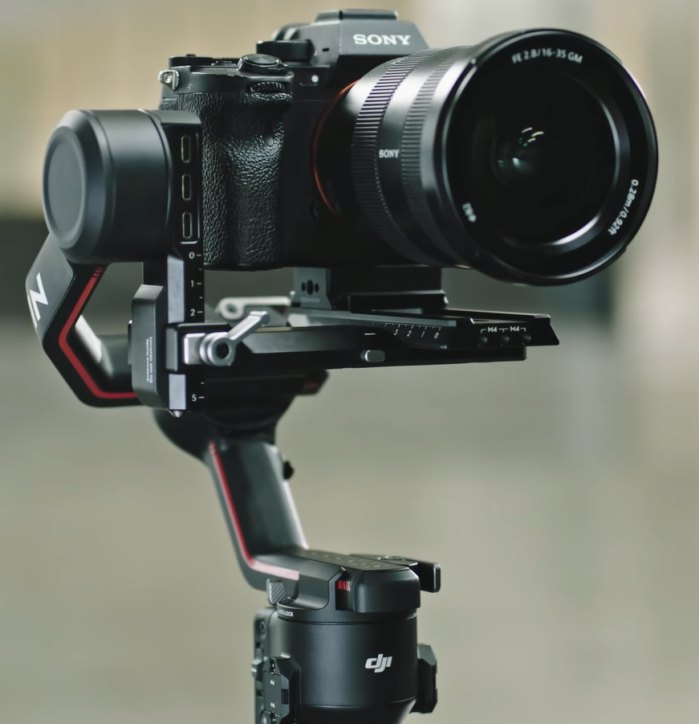

There is no doubt the gimbal has added charm to the Sony A7S III’s creativity; I have caught a glimpse of its different shooting modes, which obviously include all the primary 3D Roll 360, Portrait, and any other custom.
The third Generation RS algorithm has given a lot to this gimbal; the wonderful mechanism of 20% extra stability has impressed me in many ways. The OLED panel with an 80% larger display and the full touch control is also something I can’t ignore.
I definitely have a thing for the gimbal’s battery performance; with the advanced camera like the Sony A7S III’s battery potential, it got me worried about the stabilizer’s battery.
But above my expectations, the gimbal’s effective battery gives 12 hours of straight runtime with 2.5 hours of quickest charging. The intellectual function and features have definitely coordinated with the A7SIII artistic, with the best affordable price tag, so I suggest without a blink go for this masterpiece.
Pros
- 80% Largest OLED panel
- Enhanced potent battery
- Intuitive function and an updated algorithm
- Wireless shutter and integrated control
The easy quick, release plate - Highly durable and compact
- Auto axis lock
- Lightest weight and highest payload
- Affordable price
Cons
- The display panel isn’t reliable much
- Problematic with other cameras
2. DJI RS 3 Pro – Most Advanced Gimbal for Sony A7S III
Although they share a similar name or the same manufacturing brand, the features of these two productive stabilizers are entirely different. Actually, this DJI RS 3 Pro camera stabilizer is the updated and more powerful version of the older one.
Looking both ways, I have mentioned this gimbal because of its innovative technology and above-expectation features, while the older DJI RS 3 still wins my heart when it comes to price and convenience.
The immense compelling features of this gimbal, and how it conveniently fits with the Sony A7SIII camera is something I am eager to briefly talk about.
I was quite captivated by the gimbal’s third-generation updated stabilization algorithm; it really did enhance the artistic ability of the A7S III camera. Like its traditional version, this one is also inspired to give 20% enhanced stability over any previous Ronin model.
This is the primary reason for my super smooth and sharp, low-angle, running, or dynamic subject footage. Unlike the previous version, this gimbal does associate with the active Track Pro; this is super helpful in monitoring and framing the subject with the tracking mechanism more precisely and intuitively.
The best part of the gimbal is how straightforwardly it connects to the Sony A7S III, quick release plate makes things most manageable, while the automated axis lock secures the camera physics effortlessly.
All I had to do was get creative with the power button, and the axes became active to expand the creativity of A7S III high-quality shooting. Like any other DJI Ronin productive gimbal, this one too has an in-built OLED full-color panel, one that gave me proper insight into setting parameters and control along the complete finger touch control.
I found this gimbal more durable than its early edition; the carbon fiber construction might be the reason. If you don’t know about carbon fiber construction, let me tell you, it makes the physics rigidly durable, but it also keeps the weight lightest; that’s what it did to this gimbal.
The lightest 3.3 pounds weight is almost nothing; However, the payload of 10 pounds is impressively beneficial to hold the 614-gram weight of the Sony A7S III. With the A7S III, this ultra-pro gimbal functions effectively, improving the focus through LiDAR compatibility engagement.
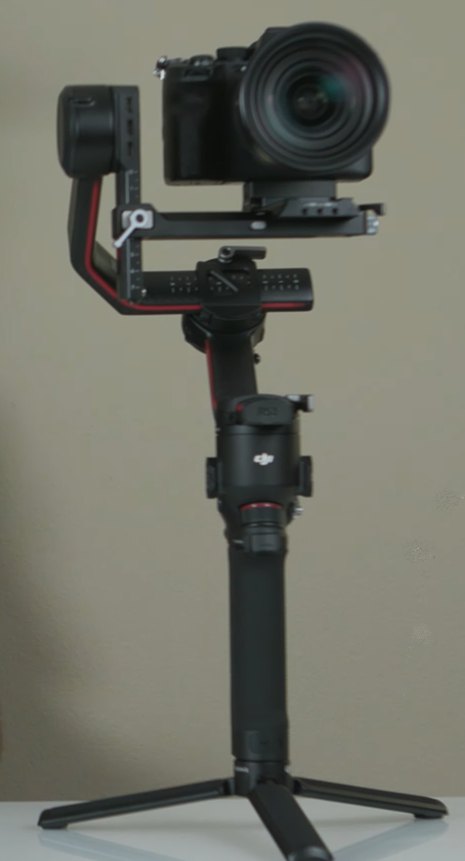

This LiDAR range finder consists of 43200 ranging points to fix the focusing and get a better result; this mingled like a limb with the intuitive focusing of A7S III.
I believe the controlling system of this stabilizer is up to the highest; it has so much to control and manage stuff in the search for productivity.
Like any other model, this DJI gimbal does have the DJI Master Wheels and DJI Force Pro, but what interested me most is its in-built Gyroscope sensor that does the whole remote monitoring and control thing whenever added with additional accessories.
Also, the wireless control gives me the power to directly control the main menu of the A7S III without interacting with the camera itself.
Other than that, it has various other broadest ports and accessories to easily attach the basics. It didn’t disappoint me when it came to power.
Also, coordinating the A7S III battery performance, this gimbal provides the longest 12-hour battery backup within a single charge, which is pretty amazing, considering the quickest charging time of 2.5 hours.
So yeah, for me, this gimbal is amazing, a little priced than alternatives but worth every penny.
Pros
- The most uncomplicated quick-release plate
- Super responsive auto-axis lock
- Wireless and integrated control
- Updated RS stabilization algorithm
- The durable carbon fiber body
- One touch control screen
- Distinctive LiDAR compatibility
- Convenient remote control
- variety of ports and accessories
Cons
- A little complicated for beginners
- An additional backpack would be great
3. Zhiyun Weebill 3 – Budget Pick for Sony A7S III
The last one in my listing will be, Of course, the Zhiyun model itself. If you are a regular videographer, there is no need to tell you about Zhuyin’s competency.
I myself have indulged years of shooting with the brand’s capable digital appliances tool, which brought me here acquainting with its very own Zhiyun weebill camera stabilizer.
There are many reasons to count why I prefer this convenient and productive gimbal for my Sony A7S III; let’s talk about them in brief.
If you ask me, I found the stabilizer’s outer body engineering attractive and productive. The L-shaped body of the gimbal with the improved sling and updated second-generation structure has amused me enough to give my advanced A7S III the hand of it.
The Overall body of gimbals weighs the least 2.4 pounds, lightest in hand, Though the payload capacity of the gimbal is not much clear.
While mounting the Sony A7S III, I figured that the gimbal had taken the main command of balancing the gig using its upgraded motor and optimized stabilization algorithm.
Not just that, I feel quiet creativity using its powerful motor to explore artistic shooting modes and different angles because Sony A7S III, with the heaviest weight, gave me ease and steady operation throughout.
If we are talking about the camera, let me be clear with the effortlessly straight mounting of my Sony A7S III camera on the gimbal. I faced no trouble with the attachment and detachment of my expensive A7S III camera with the courtesy of a Quick release plate, which is another reason I don’t have to frequently check on the gimbal and camera grip or even indulge in rebalancing.
Due to the highly-intuitive Bluetooth connectivity, I found this gimbal easily used with the wireless remote control through smartphone applications. For the physical controls, the Trigger button on the barrel helps a lot, and so does the wheel control.
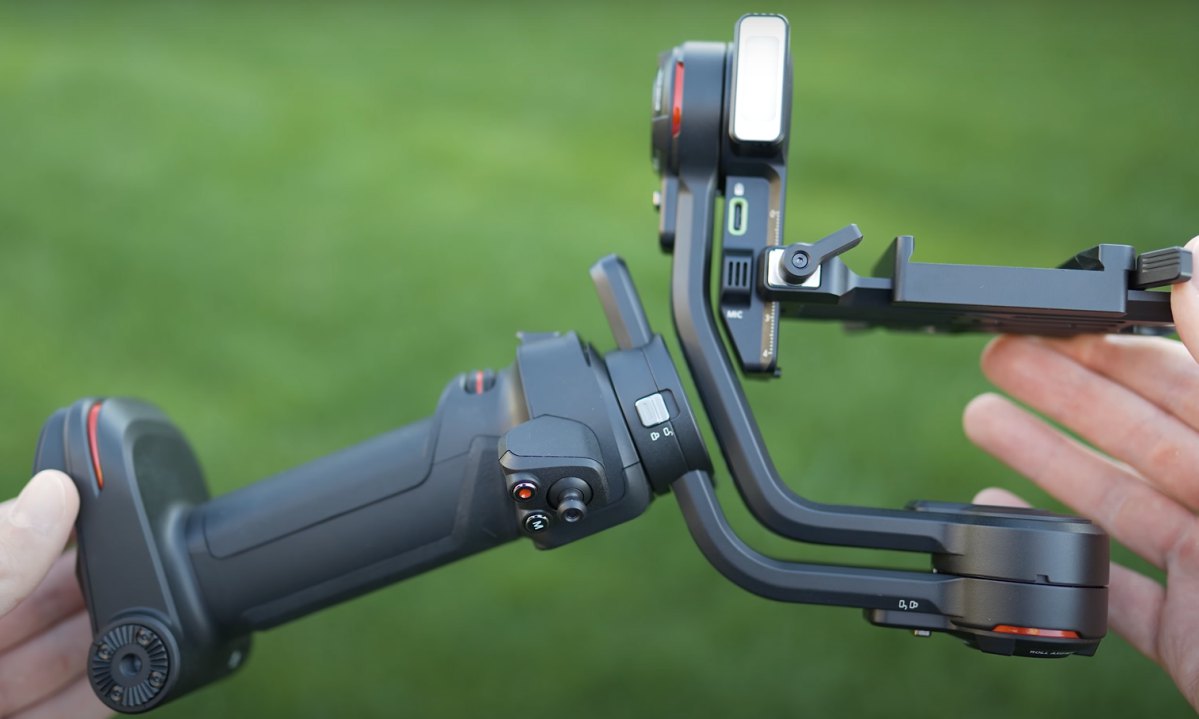

I have customized both of them accordingly by A7S III settings and rest throughout the operation by easily adjusting the basic parameters.
If you are more of a looker and controller, you don’t have to worry at all; the gimbal is also incorporated with the 0.96 inches OLED panel that can be finger-touch controlled to modify, manage or glance over the controls.
According to me, one of the best things about this gimbal is its advancement. Yes, I figured this in-built microphone had proven its benefits whenever I am recording, and the additional integrated fill light complements the 1000 lumens of brightness with the easily customizable color temperature, and filters have enhanced my imagery quality in the most significant way possible.
I do have good terms with the gimbal’ battery; in fact, it’s one of the significant key cards I love most. Enormously 2600 mAh powered battery with the ability to provide 21 hours of backup time is not something you see every day.
Also, the quickest charging plate has eased the efforts by limiting the charging time to 2 hours only. This is fascinatingly cooperating with the A7SIII own effective battery.
Lastly, surrounding these exquisite features doesn’t affect the gimbal’s cost, and it features an economical budget as well, which is another reason you should consider this gimbal for Sony A7S III.
Pros
- The ultimate Revised designing
- Highly responsive quick release
- In-built Microphone and fill light
- Updated Motor and algorithm
- Easy control and navigation
- Almighty longest battery backup
- Reasonably priced
- Advanced wireless control and attachment
- Creative shooting modes
Cons
- Payload is not clearly publicized
- Slow calibration with smartphone
4. FeiyuTech SCORP – Honorable Mention
With a change, I am bringing this very helpful FeiyuTech camera stabilizer to you. I have been using this one for a while, and its compelling features, an ideology of balancing pictures, and other functionality forced me to write more about it.
Some people like me look for the ideal balance of discounted price and potential altogether in the tool, and it all can be satisfied with this wonderful invention.
Above all, the primary reason for putting it here is because I almost feel like this stabilizer is constructed for Sony A7S III only.
You would be as amazed as I was to learn that this gimbal offers a vast range of functions at an exceptionally low price, which means this might be your best option if you don’t want to spend a lot on the gimbal.
Nevertheless, do not let its low-price fool you when it comes to versatility. I found the gimbal’s 5.5 pounds payload highly convenient to carry basic accessories or a high-advanced camera like Sony A7S III, which obviously doesn’t need many additional accessories.
In the way of discussing features, I couldn’t stop myself from mentioning how enormously potent the battery this gimbal has. 2500mAh, which showed me its best performance while providing 13 hours of operation within a single charge.
There’s one big plus too, the battery of the gimbal is integrated, and it can’t be removed, which prevents a lot of hassle. I usually remove and add the same while charging.
The charging doesn’t take a lot of time and fully charges within 1.6 hours, which usually doesn’t seem long to me, and I utilize that period in a little break or something.
What I like the most about the gimbal is its distinctive design and finest work; let me tell you another secret, the gimbal is named SCORP with the reference to the outer shape, and this will only help you firmly hold the gimbal effortlessly.
And that very special underslung rear grip has literally given me immense comfort whenever I carry the gimbal to shoot low-angle shots. One thing that can be totally adaptable by Sony A7S III is convenience; I like how the gimbal does all the work by itself by standing fixed in one position.
Yes, the side-stand of the gimbal secures the gimbal in one position, and then, with the help of subject tracking (both A7S III and gimbal), the target gets captured easily.
The composition and engineering of the gimbal have impressed me in every way, and the gimbal has been working the same as I bought it yesterday, with no high pressure or flexibility on the body.
The good thing is it also doesn’t have the heaviest weight; 1220 grams does fine. Like other alternatives, the stabilizer has the 1.3-inch most comprehensive display that is oriented with full-touch control and allows the essential control and handling of vision and modification making operation uninterruptible.
If you are wondering about the easiest, most affordable, and most functional gimbal, this could be your ultimate choice.
Pros
- Extended battery runtime
- Widest touch-control screen
- Effective auto-tune dial
- Intuitive Inception mode
- Rarest Intelligent Trajectory
- Easiest Underslung design
- Exceptionally affordable
- Creative shooting modes
- Anti-shake technology
Cons
- Lack durability
- Can’t deal with a heavy payload
How exactly does the gimbal work for better quality?
Gimbals are an innovative invention that is subjected to pivots that permit its axes(hands) to move around and shoot the object’s rotation.
Generally, gimbals have three axes (Pan, tilt, and roll), and they use them all to stabilize the camera and its shaky effect that is destined to reduce the quality of the footage.
This can be done when the gimbal motor allows the camera to foot at a different axis to fill the frame with the desired subject more accurately and steadily.
Using an intuitive algorithm and gyroscope sensor, the gimbals work by sensing the unwanted jolts and bumps while filming and then, with the help of a qualified motor equation, stabilize that very moment effortlessly.
Advanced camera gimbals, like 3-axis gimbals, also use inertial measurement units to detect the movement, which can be later balanced. The whole balancing took an exciting turn and poured down enchanting sharpness and clarity in the same.
It is said and believed that a gimbal is empowered enough to enhance the image quality well, not directly but yeah, in the way. Let’s see what a high-functional gimbal can do.
- Improved stabilization– The gimbals are a stabilization tool as their central function is to manage the shake and create better quality.
- Ease control– The gimbal doesn’t associate with lengthy and problematic shooting; they are easiest to control through a display panel or mobile application.
- Cinematic shots– With the removal of the shakiness effect, the image automatically became clear and sharp, containing all the precise details of the subject.
- Adventurous shot– The gimbal allows you to capture the adventurous shot wherever you want; these are super potent to shoot underwater, aerial, and other creative shots.
- Convenient usage– The whole mounting and installation of the gimbal doesn’t need a skilled professional, and it can be balanced through the convenient control
Essential yet Significant factor to analyze before choosing the best gimbal for Sony A7S III
Gimbal, indeed, is the most convenient tool to get if you are lurking around for better-quality footage or affectionate cinematic shots. Gimbal doesn’t have a high-cost orientation, but if you are investing your precious money in some digital tool, you probably want to be assured.
Keeping this in mind, I have listed these few essential yet very effective factors that I myself have determined while getting a gimbal for Sony A7S III.
Payload– One thing I considered at first is the payload; because I figured the ability to carry weight plays the master key in a worthy purchase, which is why I based my decision on the gimbal with maximum payload will suit best for carrying additional accessories as well
A7S III compatibility– A7S III is a pretty popular and advanced camera itself that doesn’t require any unique criteria of the gimbal. But what I did is while buying the gimbal, I cross-checked the compatibility with the camera; the size, the payload, and other mounting ease.
Engineering– Before making up my mind, I have also looked out for the gimbal engineering itself; precisely determining the composite material, the design, and the ease of building. The lightest weight and compactness gave me the benefits of moving the gimbal here and there with ease; I suggest you do the same.
Stabilization– See Gimbal’s sole motive is to provide better stabilization throughout the shoot. So before the whole purchase deal, I made a quick go-through of the gimbal stabilization technique and motor strength because it only justifies the balancing quality in the footage.
Durability– Along with the easy portability, do not forget to measure the strength of the gimbal. I have ensured that the lightest weight and compact size of the gimbal doesn’t affect the gimbal’s physical strength and longevity.
Controls– One of the significant troubles being faced after purchase is the complication in installing and the whole mounting and balancing stuff. The best thing to do is look out for easy mounting (quick release plate is what I considered here) and easy wireless control, and no professional requires installation during the purchase.
Vision– The advanced gimbals nowadays come with so much more; I like some of their attachment to the Display panel. So, I look a little more closely for an OLED or LCD panel with a wise size, one through which I can manage the essential control and monitoring. You can skip the part if you want
Battery– No Gimbal is entirely functional without a potent battery attachment; this only point can literally flip the page of your purchase. This is why I accurately examine the battery type my gimbal does have, the power it holds, and the runtime period it provides. The most extended runtime prevents the often charging of the gimbal. Also, the battery charging time is crucial to keep the smoothest operation going.
Cost– Last but not least, the cost. It’s mentioned only in the last; it’s the very first thing I configure before even stepping out for my gimbal. I have taken mental note of my ideal budget and looked around for a gimbal with the same only consisting of all the specifications I require, and boom, I got my perfect gimbal.
A quick glance over Camera Sony A7S III
Sony is the finest name in the world of digital shooting appliances; I personally have a lot of experience using its magnificent product, and things got better and better with each launch.
This Wondrously launched Sony Alpha 7S III edition has brought the most accessible set of functional upgrades and features. When I first bought this camera, I had so many expectations about its performance, and honestly, it has given me a lot more than my expectations.
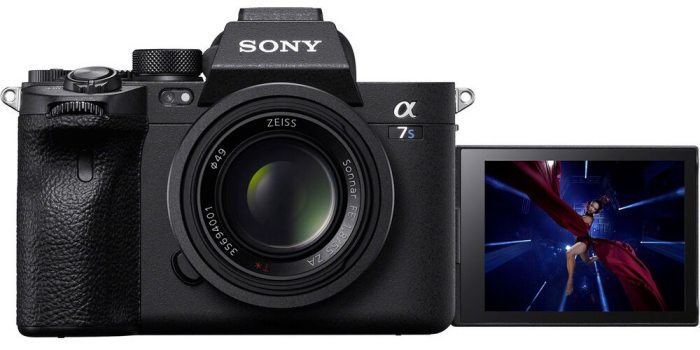

The brand introduced this masterpiece in the third iteration of its most video-oriented series. The heavy load of intuitive controls, specs, and most uncomplicated user interface grant never seen the result.
The brand brought this out-of-the-box edition in October 2020. The improved processor, better focusing, stabilization, and highest revolutionary vision are organized in the most convenient way possible. Encapsulating such great features, the camera is associated with $3500 for the body only.
A little brief about its incredibly attentive features
So that is what the creative launch of the alpha series Sony A7S III looks like; theoretically, it associates to capture magnificent footage with professional ease and control; but let’s see what other specifications it holds-
- General– The Sony Alpha 7S III is configured with the SLR-Style mirrorless body with a full-frame sensor size to frame the creativity.
- Sensor– The camera has accompanied the BSI-CMOS sensor type that grants the 12-megapixel resolution
- Filming– The camera is capable of shooting Ultra HD 4K at 120p speed, 4k, and full HD at 240p higher than ever.
- ISO– Like others, A7S III also has the auto ISO with the native range of ISO 80 to a maximum of ISO 102400; however, it can be extended to ISO 409600.
- Focusing– The camera gave ease of enabling both auto and manual focusing with the 759-phase detection point and 425 contrast detection point, and -6 to +20 EV sensitivity, curated for different shooting modes.
- Viewfinder– Nothing beats the captivating Built-in Electronic OLED panel, one that is sized 0.64 inches and associated with 9.4M resolution along the 100% coverage and 0.9x magnification.
- LCD– Similarly, for vision’s sake, the camera also includes an articulating LCD panel size of 3 inches and with a better resolution of 1440K dots with all easy and finger touch control
- Shutter– The camera allows the working of both electronic and mechanical focal plane shutter
- Shutter speed– The intuitive working of both shutters provides a continuous shooting speed of 10 fps for up to 1000 frames, and then it eventually falls to 8 frames per second.
- Storage– The camera configuration is made in such a way that it supports a dual storage card slot, both supporting CFexpress Type A or SD card in UHS-II Bus format.
- Lens– The configuration of the camera says that the camera has E mount construction which means it supports Sony E lenses only.
- Microphone– the camera supports an in-built microphone with the stereo microphone type guarantees better video footage
- Interface– For the input and output interface, the camera is associated with an HDMI port and one Type C quickest charging mode
- Connectivity– For the most straightforward data transfer and stable connection, the camera involves the participation of Wi-Fi and advanced Bluetooth.
- Stabilization– The camera has been blessed with the sensor-shift 5-axis stabilization; a super powerful technique that uses a 5.5 shutter stop to minimize the camera shake effect in footage
- Battery-You can be fascinated by the Lithium-ion 2280 mAh battery of the camera, one that can be easily rechargeable with Type C quickest charging.
- Runtime– The NP-FZ100 battery of the camera allows uninterrupted shooting operation with the potential of approx. 600 continuous shots within a single charge
- Designing– The camera does have rigid physics, profound durability, and compact and ergonomic design along the tripod mounting thread.
- Weight– The camera is known for its convenient usage and handling which can be assuredly granted by the lightest weight of the camera, figured 614 grams for the body only.
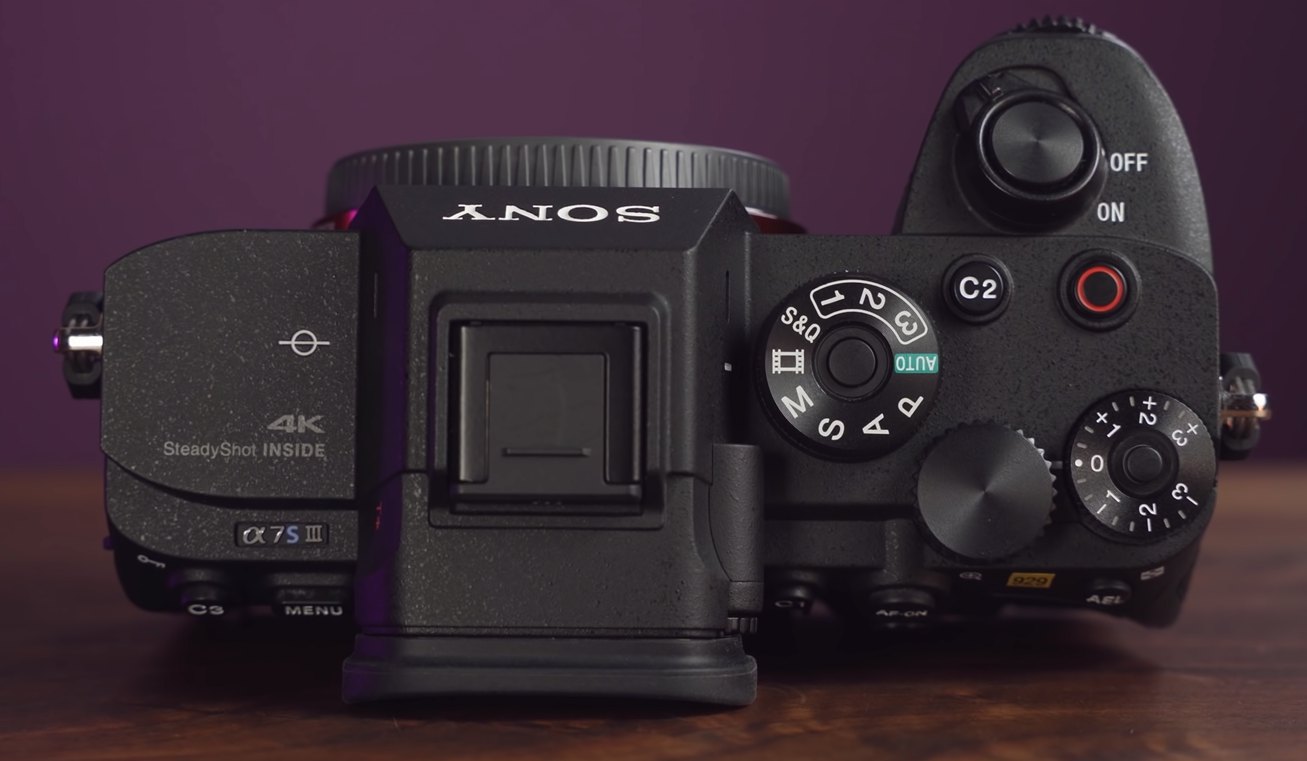

Frequently Asked Questions (FAQs)
Q. Why should you buy a gimbal for Sony A7SIII’s videography?
Well, there is a lot of reason I could list here explaining why one should get a gimbal for shooting better video from A7SIII; but for now, let’s stick to the point where the gimbal provides immense confidence to shoot more balanced and stabilized clips of dynamic or extremely fastest moving subjects.
This is how the mechanism works to pour more clarity, steadiness, and sharp, precise details into the footage, which are absolutely all factors considered for a suitable video type. So if you are an A7S III user and a videographer, you might need to get your hands on smooth, stabilized subject details while moving (that happens in the video) through this considerable investment.
Q. How much does a good Sony A7S III gimbal cost?
I would say not much; Gimbal usually comes pretty handy with a reasonable price, even the high-performer ones. For Sony A7S III, I would set the bar at around $600; as an ideal budget for the fully featured gimbal with A7S III super compatibility. Though I have used the lesser $300 and highest $899 gimbals too, what suits me best is the ideal range between $499 to $599.
The gimbal is relatively the finest investment, but you don’t want to exceed the budget as well; also, since the camera itself costs $1999 you don’t want to spend a lot on the gimbal only. So fix the range in between and get the one you can afford.
Q. Can Sony A7S III be used by entry-level photographers?
The full-frame advanced Sony A7S III camera seems to have much more than it shows; I brought this exceptional beauty a little while ago, and it took me 3 to 4 days only to understand its advanced potential and abilities.
The 4K videography, 12 Megapixel sensor is pretty much convenient to both enthusiasts and pros. Except that I found the configuration of the camera and the fundamental control relatively straightforward and the whole focusing, ISO can be adapted effortlessly which means that yes, the A7S III can be used by an entry-level photographer.
Q. What maintenance does the gimbal crave?
I believe Gimbal is the easiest user-friendly tool, and it doesn’t crave much attention for maintenance. However, it’s no harm to affectionately take care of your lovable tools. There are a few things you can do to manage the longevity and quality of the gimbal.
It would be best to try cleaning your gimbal often when required, only with a professional cleaning tool. You need to do gimbals and can’t do everything, so keep your pace with that. Do not overload them with additional heavy accessories. Store and prevent them in a safe area away from dust and moisture.
Final Words
So, there’s that; Haven’t you figured yet that “Gimbals are the best friends of the camera”? If you give a hand to the high-quality resolution to adapt in your footage, you need to carry the gimbal in the very same hand.
Theoretically and practically, Gimbals are the most convenient and creative tool that helps in balancing the footage and bringing extra-special stability and sharpness to it.
Sony A7S III or any other advanced camera like that, they all like hanging around with the advanced rightful gimbal to get laid with the desirable footage.
The gimbal I have used and listed here might give you the hope of a flawlessly sharp and professional shot; other than that, the impressive features of the A7S III are also no less to discuss.
But that all comes to an end now. I only wish that you have found what you have been looking for. And that is the bid adieu from me and my guide, but I really hope that the article has benefited you in a productive way so that you won’t find any trouble in getting the right tool or more stable footage.

